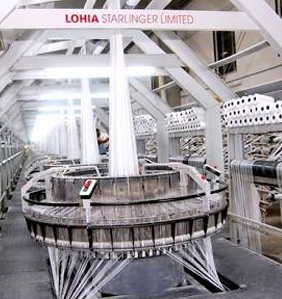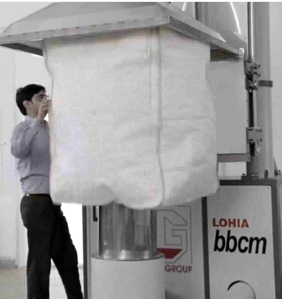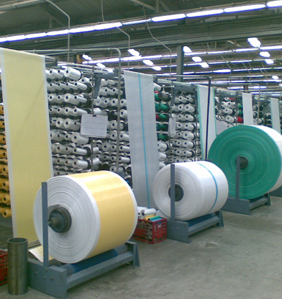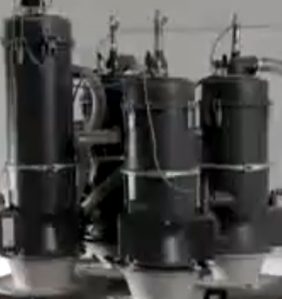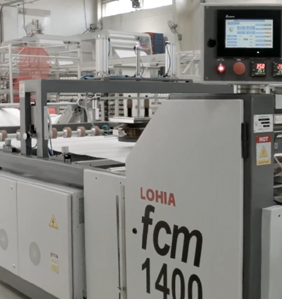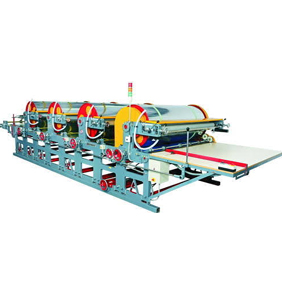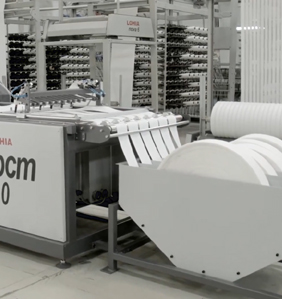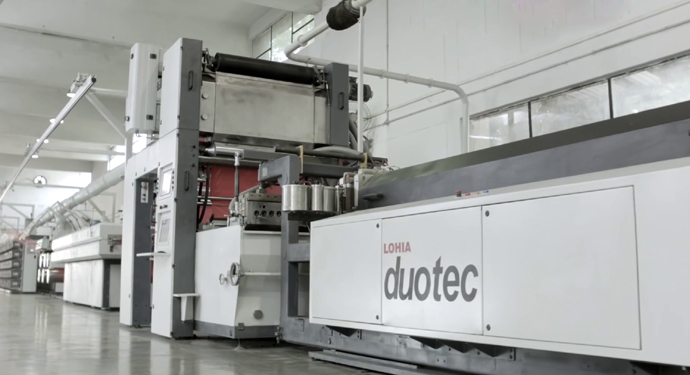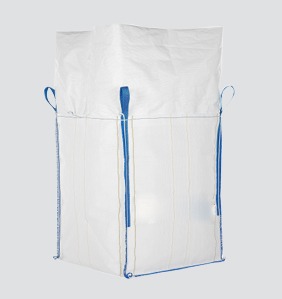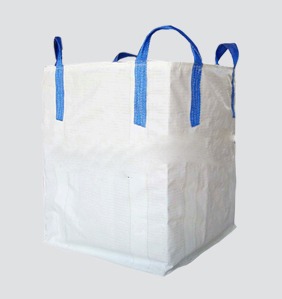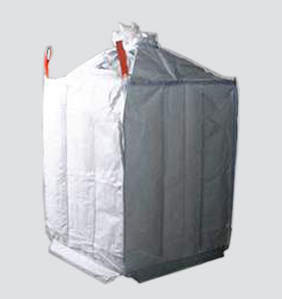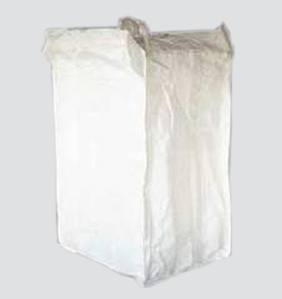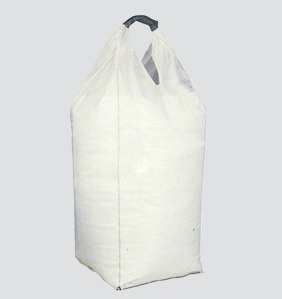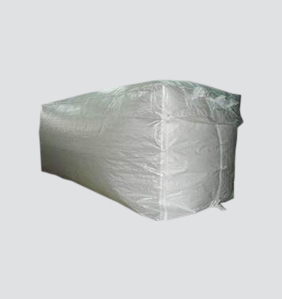Product Categories:
There are many common types of FIBCs available in the market place. The most commonly used bulk bags are constructed as either a U-panel or circular construction. We offer a variety of constructions, such as:
- U-panel
- Circular/Tubular
- Baffle
- Four Panel
FIBCs are also constructed based on their application. Whether it is being used for food grade, UN rated bags or multi-trip bags, the application is as important as the construction. Common FIBC applications are as follows:
- Food grade bags
- UN rated bags
- Multi-trip bags
- Chemical bags
- Conductive or static dissipative bags
- Valve bags or liquid bags
Each bag has a specific fabric required due to their application. Some bags require antistatic qualities, others do not.
- Type A Fabric - No electrostatic protection.
- Type B Fabric - Surface breakdown of < 6kV.
- Type C Fabric - Electrically conductive or groundable.
- Type D Fabric(Chromiq) - Static dissipative - See Crohmiq bags for further information.
- U-panel bag - requires two seams along two opposite sides to create two panels and a U-panel shape. This style of bag has become the industry standard in the United States.
- Circular bag - constructed from woven fabric on a circular loom. The fabric is woven into a continuous tube of fabric and cut to the precise height required. The tubular body design is ideal as a liner less option for fine materials. It is also an excellent alternative to the original four panel bag construction.
- Four panel bag - considered the original polypropylene design. This construction requires seams along four separate pieces of fabric sewn to create a four panel bag.
- Baffle bag - involves pieces of fabric sewn into the corners of the bag to help the bag maintain its cube shape after filling. The baffle design is equipped with holes which allows product to flow through. The baffles helps prevent the bag from bulging and helps sustain the shape of the bag, keeping it upright without losing its shape.
Food grade bags - are made with resins meeting FDA standards to be used for food purposes. Food grade bags are manufactured in a clean room facility and can be certified by a food safety standard like SQF, AIB and/or BRC. A food grade bag which has been manufactured by a facility that has been audited and is certified by a food safety standard like the American Institute of Baking(AIB), Safe Quality Foods(SQF), or British Retail Consortium(BRC) or others, is considered a certified food grad bag. Our bags are made of resin which meets the FDA food grade requirements.
UN rated bags are put through a series of rigorous tests such as, drop test, topple test, and top lift test. The testing is executed by an independent testing facility. Once the bag is UN certified, each bag will be assigned a specific UN number identifying that specific bag. The UN certification usually lasts for one year, or otherwise specified by the testing house, some will certify longer.
Multi-trip bags Most bags are designed with a 5:1 safety factor, meaning the bag is rated to hold 5 times the amount of the bags safe working load. A 5:1 is intended for single use bags. 6:1 bags are designed for multi-uses only.
Chemical bags used to transport chemicals.
Conductive or static dissipative bags (Anti-static) the difference in the two is the flow of the electrical resistance. Conductive bags allow the electrons to flow easily across the bag and charges go to the ground or another conductive object. Static dissipative bags allow the electrons to move slower and more controlled through the antistatic fabric, reducing the charge.
Valve bags or liquid bags allow liquid to be stored or transported easily. Valve bags are equipped with a valve port for releasing the liquids in a controlled manner.
Quality of Service
TechSun is committed to setting a high level of quality for customer satisfaction in every stage of manufacturing.
TECHSUN ’s QA/QC-HSE dept is ready to meet high level customer requirements. Quality is achieved by high level educated and experienced personnel. TechSun is committed to assisting employees in their pursuit of excellence by providing them with the leadership, cooperative environment, training and facilities.
Satisfying customer requirements is more than just designing a bag. Quality is inherent in every part of process in TechSun. From the choice of materials, to the use of advanced technology, to the maintenance of safety standards, and to the timely delivery of the finished goods- all are of equal importance in making a TechSun product.
Quality of system
We meet the strictest industry standards. At TechSun , we apply the strictest quality standards of any leader in the FIBC industry. Techsun , Meet and exceed the ISO 9001 requirements in every production process. High quality standards are applied to make sure that the system works properly and the final product meets the desired criteria. A quality assurance system insists on certain regulations for the achievement of this target. This support confirmed the manufacturing standards, accountability and documentation.
Quality of product
At TechSun , quality is an integral part of our mission and core business values. These guide our actions to ensure that we deliver the highest quality products to satisfy our customers’ requirements. The QA/QC-HSE dept use its own equipment and devices (properly calibrated) for measurement, tests and non destructive examinations.
Technical specifications of raw material, strength properties and UV content of components are all checked with respect to the international standards.
Quality control process in TECHSUN consists of three major steps:
- Material inspection and testing
- Process inspection and testing
- Final quality control
Throughout the material inspection process, yarn is tested for width and strength. Once yarn is woven, fabric is tested once again for width, fabric weight, weaving density in addition to the strength of the warp and weft. Samples taken out of fabric are also tested for UV resistance. The fabrics are tested for more than 200 hours. This process inspection also applies to the final quality control where the bags are measured and visually checked to ensure the customer’s specifications. Finally, the bag is tested in the test rig machine.
Test parameters
- Elongation test
- Breaking test
- UV resistance test
- Coating performance test
- Drop test
- Stacking test
- Fabric test
- Friction test
- Raw Material property test
- Melt Flow Index (MFI) test
- Ash Content test
TECHSUN is able to track back through the production process, all the way to the raw material, to identify the problem. Using the traceability of quality assurance system, all non-conforming products are marked in the plant using special means. The result of this stringent quality assurance program is the product that customers of UAC have come to trust and depend on.
- Demand for FIBC/Jumbo Bag is growing day by day. It is use for many different ways for storing and handling the products in bulk quantity. It handle and carry weight from 500 kg to 2000 kg as per needs. FIBC should use proper ways for storing and transportation of materials.
- Jumbo Bag Storing –it is best for storing materials in clean safe manner. It protects from sunlight and climatic changes.
- Jumbo Bag Filling – Bag is filled by resting it on ground or on a pallet as per packaging needs.
- Jumbo Bag Discharging – In common cases FIBC is discharge by help of gravity but in some cases it required suction for emptying. Special discharging sprout use for emptying the bag.
- Jumbo Bag Lifting – FIBC/Jumbo Bag are lifted through its loops placing on forks. It easily handle and move from one place to other by the help of loops.
All industries have their own language and knowing how people refer to things will help you identify available options and communicate with your FIBCA member supplier. Below is some common bulk bag/FIBC terminology that you may encounter.
- Approval Drawing – A drawing supplied by the plant for the prospective customer’s review and approval, prior to production, in order to assure compliance with the customer’s needs and expectations.
- Baffle – Pieces of fabric or other material sewn across each corner of a tubular or four – panel bag to improve a bag’s squareness, appearance, improve the stability of the load and to more efficiently utilize storage or shipping space.
- Bag Height – Height dimension of an FIBC measured from the top Seam to the Bottom Seam.
- Belt Patch – A piece of fabric sewn either between the main fabric of the bag body and the Lift Belt, or on top of the Lift Belt, within the belt sewn portion, used to improve sift resistance and/or the safe working load (SWL).
- Bias Strap or Tape – Made of multifilament yarns, (MFY), polyester or polypropylene, and used to tie inlet and outlet spouts. Also called a Web Tie or Tie Strap.
- Body Fabric – Main Fabric used on the body of a u-panel, four panel or circular bag.
- Bottom Fabric – The bottom material of a tubular or four panel bag.
- Bottom Spout – Also called a Discharge Spout, used as an outlet to empty the contents of the FIBC.
- Breathable Fabric/Bags – Uncoated or non-laminated fabric/bags.
- Circular Woven Bag – Also called a tubular bag, it is made from fabric woven on a circular loom, which is then cut to the proper length for a specified bag height, thereby eliminating the vertical seams on each of the bag’s sides.
- Cone Top – A variation of an inlet, where the top is a pyramid-type to allow over filling of the bag. Also called a Conical Top.
- Coated Fabric/Bags – Fabric or bag which is coated/laminated with polypropylene (PP) to reduce moisture intrusion or sifting of the contents. Also called Non-breathable or laminated fabric/bags.
- Cord lock – A closure device to hold the rope or cord in place on the spout – typically used on the discharge of bags. They come in a variety of sizes and eliminate the need for hand tied knots.
- Denier – The weight of yarn in grams per 9,000 meters.
- Discharge Spout – Also called a Bottom Spout, used as an outlet to empty the contents of the FIBC.
- Document Pouch – Typically made of either polyethylene or polypropylene, it is where shipping or identifying documents are usually placed. Also called a Pocket or Envelope.
- Drawstring Closure – A type of spout construction similar in purpose as to a petal closure, but with the loop/string along the circumference of the closure.
- Duffel Top – A type of FIBC top similar to a duffel bag whose inlet extends from the top seam and follows the bag’s base dimensions. Also known as a skirt top.
- Extended Belt – A type of FIBC construction where the webbing extends around the bottom of the FIBC. This construction is not applicable for U-panel FIBC’S.
- Fabric Mesh – The measure of the density of the fabric weave, measured as the number of yarns per inch in both the Warp and Weft directions. A typical construction is a 12×12 mesh.
- Fabric Weight – The measure of the fabric weight in ounces per square yard or grams per 100 square centimeters. An example of a fabric weight is 6.5-ozs/sq. yd.
- FIBC – Flexible Intermediate Bulk Container
- Fill Spout – Also called an inlet spout or top spout, used as the inlet for filling an FIBC. It is designed to fit the customer’s filling chute during loading.
- Filler Cord – Typically a polypropylene material used in manufacturing sift-resistant FIBC’S. A rope or braided yarn-like cord that is sewn into a seam to help prevent the escape of fine dusts and powders.
- Form–Fitted Liner – Designed to take the exact shape of the FIBC. Form-Fit Liners will allow improved filling and complete discharging of product. Unlike a basic “tube liner”, Form-Fit Liners offer a flat top and bottom and incorporate a spout diameter and length to best compliment the FIBC’S fill and discharge spouts.
- Full Open Discharge – A type of discharge whose outlet extends from the bottom seam and follows the bag’s base dimensions. Also called a Full Open Dump.
- Hem/Hemming – A fold and sew, or glue operation, which prevents fraying of cut fabric and will add lift strength and seam strength to each bag. This also provides a clean finish to the FIBC. It may be either towards the inside or outside of the bag. Hemming can be used to achieve desired FIBC dimensions.
- Lay Flat Width – The width of tubular fabric if stretched or laid flat from edge to edge. A 14” diameter Fill spout would have a lay flat width of 22”.
- Loop Height – When layed flat the measurement from top of bag to apex of loop.
- Main Fabric – U panel of a U panel style bag.
- MFY – Multi-filament yarns, used in the weaving of bias tape/straps and lift belts. May be constructed of polypropylene or polyester threads.
- Multi-Trip FIBC’s – Bags designed in accordance with ISO 21898 for multiple trips.
- Perimeter Belt or Band – Bias tape/strap sewn around the top seam as a reinforcement or identifying mark. Also known as Safety Belt.
- Petal Closure – A four-petal like spout construction used to hold in the spout during transport.
- Petal-Type Patch – A type of petal closure that is separate from the bottom fabric used to hold in and protect the spout during transport. Also referred to as reinforcement square.
- Polyester – A type of polymer often used in producing monofilament multifilament yarns and threads. It is typically not easy to recycle with a polypropylene FIBC, since the polymers are virtually incompatible.
- Polypropylene – A type of polymer used in producing monofilament and multifilament yams and threads.
- Port Hole – A type of outlet construction without a spout. The hole cut is reinforced with bias tape/strap.
- Production Drawings – A set of documents prepared by the manufacturer which contains the detailed description of an FIBC’s dimensions, features, components and special instructions as approved by the customer.
- Reinforced Section – Section of the FIBC where the lift belt is sewn onto the fabric. This section of fabric has additional Warp yarns, which contributes to the strength of the bag. It is also called a Tramline.
- Remote Open Discharge (R.O.D.) – A type of outlet that has provisions for discharge of material without an operator reaching under the bag to open the spouts.
- Safe Working Load – SWL is the amount of load, (in pounds or kilograms), which a bag is designed to carry.
- Safety Factor – It is an industry standard requiring the FIBC to handle five or six times its Safe Working Load, (SWL), normally written as a ratio, “5:1 or 6:1 SF”.
- Sanitary Flap – A bottom diaper that protects the entire bottom surface of the bag for cleanliness and wearing. May also be referred to as a protective bottom.
- Seam – A sew line made by the attachment/assembly of two or more components.
- Side Panel – A fabric component of a sewn bag style of construction. This can be either two pieces attached to the U-Panel, or four pieces, which form the Four Panel bag.
- Shelf-Life of FIBCs – As of this present date, the FIBCA is not aware of, nor has it ever been presented with any data, test reports, or studies determining the shelf life of an FIBC. Any recommendations in regards to the shelf life of an FIBC, are solely the responsibility of each company making such declarations. The Flexible Intermediate Bulk Container Association does not endorse any typical shelf life for a FIBC / Bulk Bag. Variables such as UV inhibitor used, construction (fabric weight, thread, webbing, etc.), exposure to environmental hazards (UV, temperature and humidity), storage methods, handling methods and the contents of the FIBC can dramatically impact the shelf life of a FIBC. The best method for determining if a FIBC remains suitable for use is to conduct periodic performance testing (top lift, UV, etc.) on samples and compare the results to the results from the newly manufactured samples from same lot. Samples should continue to meet industry standards such as those set forth in ISO 21898
- Sift-Resistant Construction – A type of an FIBC construction that provides resistance from product sifting when the bag is filled with very fine materials. Also referred to as “Sift ¬proof’ construction. This typically utilizes coated fabric and filler cord in the sew lines.
- Single Trip Bag – An FIBC designed in accordance with ISO 21898. For one time use.
- Spout Cover – Also called a petal cover, it is a piece of fabric sewn between the spout and the petal closure used to hold in/protect the spout.
- Spout Diameter – A dimension of the spout measured across the circular opening.
- Spout Height – Height dimension or length of the spout measured from its point of attachment on the top/bottom fabric to its free end.
- Stevedore Strap – It is a belt connecting either two adjacent lift loops, or all four loops, used for single point lifting.
- Stitches per Inch – A sewing specification requiring “X” number of stitches per inch.
- Top Fabric – The top fabric used on a FIBC.
- Tube Liner – A liner with no spouts or contours, it is a straight cylinder, which may or may not have one end heat-sealed.
- UV Stabilized – A feature of an FIBC fabric that provides protection from prolonged exposure to the sun’s degrading UV rays. An additive that blended with the resin prior to extrusion of the yarns to provide this protection.
- Volume – The size, or amount of material, an FIBC can hold. It is generally measured in Cubic Feet.
- Warp – Yarn or tape in a fabric, oriented perpendicular to the Weft yarn during weaving. This would go from top to bottom in the body fabric. Also identified as the yarn in the “machine direction”.
- Web Tie – Made of multifilament yarns, polyester or polypropylene and used to tie the inlets and outlets. Also called a Bias Strap, Tape, or Spout Ties.
- Weft – Yarn or tape in a fabric, orientated perpendicular to the Warp yarn during weaving. This would go from left to right in the body fabric. This is identified as the yarns placed by the bobbins of the looms.
- Yarn/Tape – Extruded PP sheet slit and stretched to form part of the woven fabric for the FIBC.
Infrastructure
